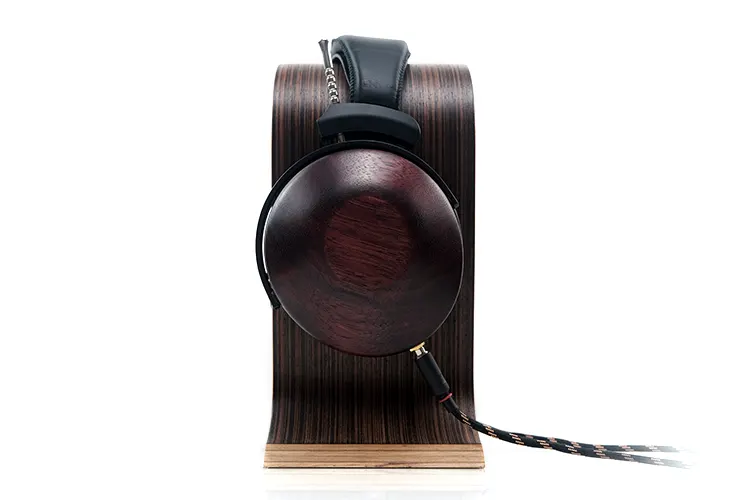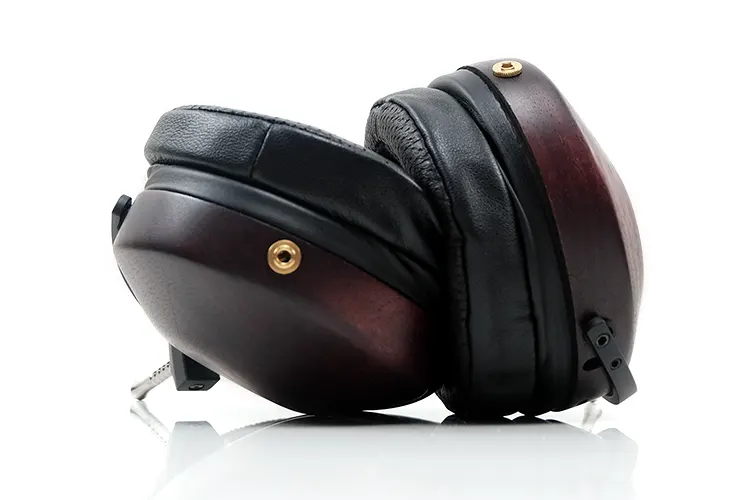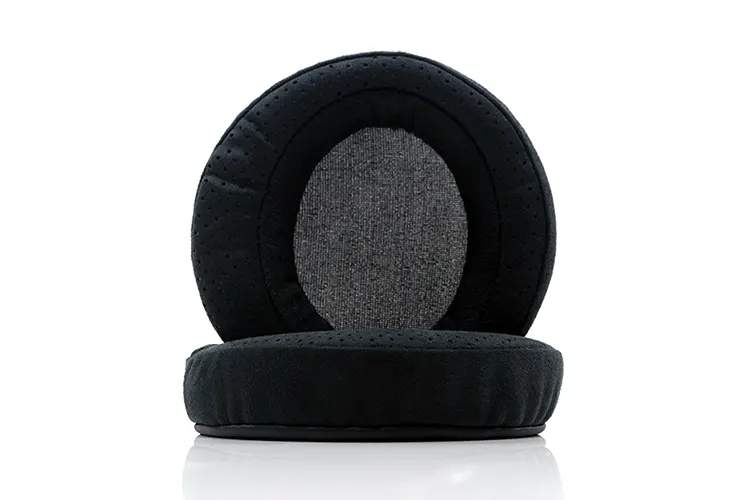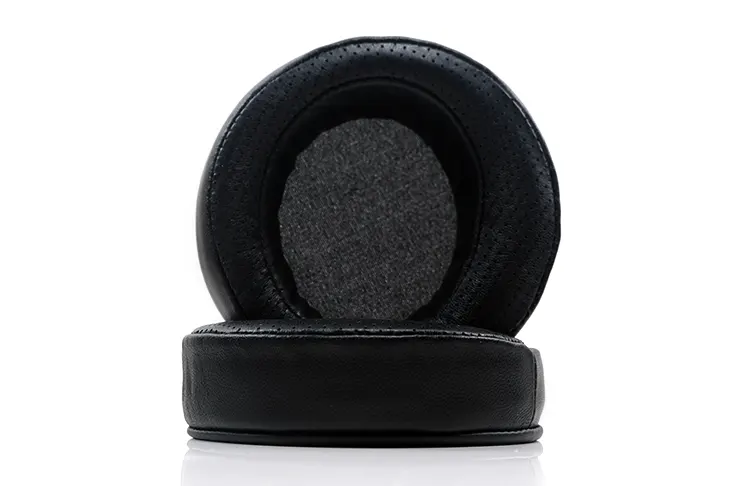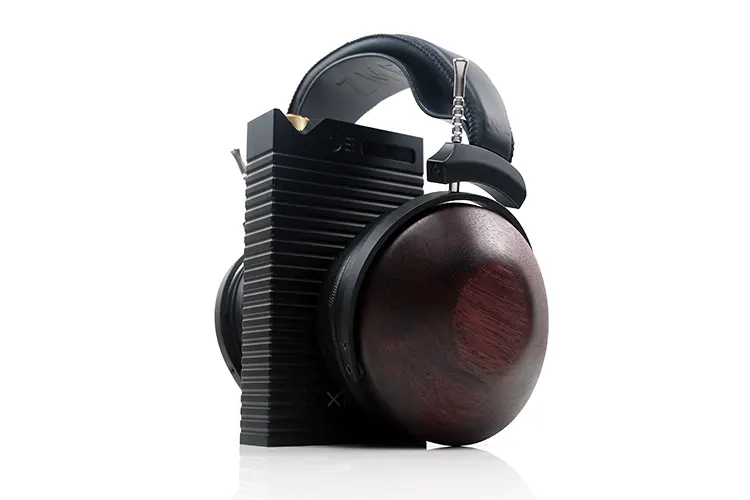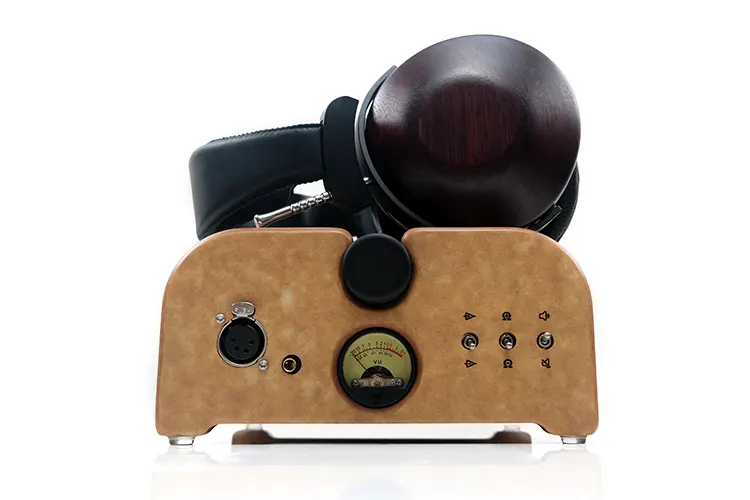Sound Impressions
The following sound impressions of the ZMF Headphones BOKEH were completed using a mix of the ZMF Homage and the Cayin HA-2A amplifiers with a lineout connection from the Cayin N7.
The BOKEH were fitted as stock with the burst mesh combined with the Caldera hybrid thin pads. Some reflections on alternative pad responses may arise but the specific focus on the different sound signatures is in the Synergy section further down.
Summary
When I travel I tend to bring headgear with a level of exaggeration in their tuning. More for enjoyable emotive listening than referencing. Quite often you are distracted by your ever-changing surroundings so you need a sound signature that resonates a bit more than usual, be it treble, bass, or in-your-face vocals.
The BOKEH very much fits the above description and I can see why ZMF has put it into the ‘carry around’ category.
Not only is it easy to drive but it’s got a joyful, bombastic type of tuning with a ‘big sound’ ideal for a motivational 1-2km walk but not one you would necessarily benefit from for referencing or monitoring.
I think the important thing to get out of the way at the start is how open it sounds. Not ‘fade into big open skies’ kind of spacious but compared to some of the competition such as the DCA Noire and the LCD-XC it projects a more atmospheric staging quality with good left-right separation and fantastic damping.
The BOKEH coloration is all ZMF and by that I mean a natural to slightly euphonic tonal quality with good fundamental frequency weight to both instruments and vocals and a light dash of treble sparkle.
It’s not as resolving as the higher-end models such as the Atrium or Caldera Closed but not that I would expect it to be given the lower price point. However, it responds extremely well to a wide range of sources, be it a dongle, DAP, solid-state, or tube.
My personal favorite is the Cayin HA-2A and if I want to move around I would grab Cayin’s N7. Both pairings deliver some beautifully smooth and intoxicating vocals and highs on the BOKEH that I could listen to for hours without fatigue.
Frequency Response & Coloration
With multiple pads come multiple potential curves but for my tastes, I find the hybrid pad offers the most balanced sound signature.
Arguably, the suede pad with the solid Titan Mesh comes closer to any sort of reference curve but the subsequent performance didn’t bring the same level of joy as the hybrids where I suspect it will find more happy owners.
With the hybrid pads, you get a relatively neutral to slightly elevated response from 20Hz up to 100Hz but not a sub-bass presence I would classify as overly dominant. Where I find the bass becoming more fulsome is from a noticeable upper-bass to lower-mid lift from 200-500Hz.
On the hybrid pads, the balance is just right; not huge on the bloom but full-bodied enough with a nice warm glow and a solid fundamental frequency to lower-register instruments and vocals. The damping is really good here with very little closed-cup resonance and reverb.
Up to 3k the mids are neutral creating a relatively solid not overly forward vocal presence. They can get a little overwhelmed by the more dominant bass and highs using the protein pads. This is reversed by the suede pads with a nice lift of around 2-3dB over the 1-4k.
The subjective sweet spot for me is the hybrid pad 1-4k tuning which sits somewhere in-between bringing better weight and density than the Suede pads and clearer positioning and presence than the protein pads.
The BOKEH has a bit of energy from 6-10k but avoids sounding harsh or uneven with the hybrid pads. You might pick up a slightly glassier quality to the treble with neutral or cleaning-sounding amps but with analog or naturally tuned alternatives, the balance is just right.
Staging & Dynamics
The BOKEH staging capability veers towards the big and atmospheric with its strength more on the macro than the micro.
It has excellent depth and decent height with a width that scales depending on the source and power available to it. Some amplifiers such as the Topping DX9 create some impressive width and channel separation whereas others focus more on depth (Homage) and vocal presence (Cayin HA-2A)
The BOKEH performs well in terms of note body and space but the micro-detail and dynamic range are a bit behind the likes of the LCD-XC and Liric II. If you are after speed and articulation this is a weaker spot for the BOKEH.
The pads will shape the soundstage even more with the Protein pads shifting the emphasis to the lows and highs and the suede pads turning that upside down with a stronger or more intimate midrange and vocal performance and less staging depth and weight.
You can attenuate the highs even more and bring some subtle sub-bass emphasis with the solid Titan Mesh to create a darker staging quality if that is your preference.
Synergy
Pad Options
You have several pad options to fine-tune the BOKEH response. The above sound impressions are completed with the stock hybrid pads, a mix of leather and suede with a perforated top. The additional pads sent to me included an all-suede option and protein pads, which also have perforated tops.
Of the three options, the suede pads are the most bass-neutral with the protein pads creating the strongest bass shelf. Arguably, the hybrid pads are the most balanced of these options and the ones I prefer to use for most of my listening sessions.
One final note, these are the tightest and trickiest ZMF Headphones pads I have experienced to date in terms of attaching them. I am glad to report though that ZMF will be bringing out an “earpad” ring that will attach to the earpad to help it keep its shape and make it easier to install.
However, here is a helpful tip on how to change the pads without accidentally knocking the wood cups together and damaging them while changing the pads.
Wrap a small hand towel around one cup, then twist the headband so that the second cup rests on top of the wrapped cup. Not only will it avoid knocking but the towel provides some additional grip under the cup while changing the pads.
If you are new to ZMF Headphones pads rolling I highly recommend you view this video first. I found the technique taught here by Zach to be very useful.
Suede Pads
The Suede pads reduce that upper-bass bump around 200-300Hz by a few dB but create a better lower-mid presence and a stronger 1-4k elevation. This shifts the BOKEH’s focus further upwards by comparatively flattening the bass, creating more space for the mids to shine.
This can work well for those who want to dial down on the bass bloom or for pairing with amplifiers such as the ONIX Mystic XP1 whose dense and voluminous low-end I find a bit much with the BOKEH using the hybrid and protein pads.
The BOKEH’s 6-10k is more noticeable with the suede pads but the overall tone is slightly to the soft side. For my preference I found myself gravitating to tube amplifiers to keep the extended 3-4k region nicely saturated and from picking up too much treble overtones.
Amplifiers such as the Cayin HA-2A and the XP1 work well here if you want an improved treble presence with a sweet tonal quality from the BOKEH.
You can temper this sound signature with the solid Titan mesh tweak, an acoustic filter that slips under the pads and over the driver.
This will bring down some of the treble energy and introduce a subtle boost in the sub-bass quantity from the suede pads making them almost quite mainstream in their performance (Harman Target-friendly).
Protein Pads
The Protein pads bring you the closest to what I would closely describe as a V-shaped sound signature.
It is certainly the most ‘planted’ sounding with an elevated bass shelf from 20Hz through to almost 300Hz giving it some additional weight and prominence over the more balanced hybrid sound.
There is some contrast in that coloration from an elevated 6-10k region so you get some sparkle along with the emphasized fundamental frequency, or ‘tops and bottoms’ as I like to call it.
The only drawback of an otherwise high-energy sound signature is the mid-presence. I am a mid-lover and even though it’s only a slight 1-2 dB drop in the 1-3k region, the extended bass shelf and highs make the drop sound more pronounced than it is.
Mesh Options
As with previous ZMF Headphone headphones models we have reviewed you can further fine-tune the sound signature with a set of mesh options, of which there are two here for the BOKEH.
Those two include the stock ‘burst’ mesh which is a fairly heavily perforated flat metal disc that is attached to the baffle above the driver with 4 small screws.
The second additional option ($19.99) is less perforated and called a Solid Titan Mesh of which you can see what they look like in the picture above. You can switch between the meshes by simply unscrewing the small screws and swapping them around.
The main benefit of the solid mesh is its ability to tame any potential treble overspill in your system setup. It essentially creates a slightly darker set of highs around 4-6k combined with a subtle bump in the sub-bass performance of the BOKEH.
For example, in my pairings assessment further down this page, I talk a bit about ‘stressed’ highs from strong gain levels with some amplifier pairings. I felt this was less of an issue with the solid Titan mesh, especially with the suede pads and a brighter amplifier.
However, with other scenarios, I preferred the stock burst mesh, especially with tube amplifiers and the more balanced hybrid pads where I felt a diminished treble response would unbalance the sound signature a little.
Portable Pairings
Going into the pairings I presumed the BOKEH’s smooth overtones would mesh well with neutral sources to maximize every ounce of resolution or detail in the performance. However, this didn’t turn out to be the case.
The primary reason is what I call the “ZMF vibe.” The BOKEH is relatively bombastic-sounding, but the treble becomes thinner when pushed so the tuning needs a more organic touch to sound right.
For example, using their respective balanced PO, the HiBy R8 II and the Cayin N7 had no trouble driving the BOKEH in a medium gain setting. However, switching to a high gain resulted in a slightly stressed set of highs, more so from the neutral R8 II.
On medium gain, the N7’s smooth and spacious sound signature projected the “ZMF Vibe” the best for me. The R8 II was more ‘driven’ sounding on the lows but a little sterile on the highs creating a slightly glassier quality to the treble.
The N7 is tailor-made for the BOKEH with its smoother analog overtones, liquid treble delivery, and a very open soundstage with excellent channel separation.
The N7 didn’t overcook the bass shelf. This was an issue for me with the ONIX Mystic XP1 which sounded incredibly dense and powerful on the BOKEH lows. Perhaps too powerful for my tastes but I can see bassheads loving this combination.
To some extent, you get a similar organic vocal performance from the RU7 pairing. However, the slightly leaner bass delivery and a slight drop in dynamic range placed it behind the N7 in my preferences.
I would say the iBasso DC-Elite does better for dynamic range and clarity on the BOKEH than the RU7 but it’s back to the ‘vibe’ analogy, it just sounds a little too clean and proper for my tastes.
Desktop Pairings
Desktop pairings kind of followed a similar pattern to portable pairings though in the case of the 3 amplifiers I tested each one brought different strengths to the table that I think various audiophiles will find appealing.
For example, the Cayin HA-2A being fed with a lineout from the 1BIT DAC for the N7 sounded gorgeous and perfect for my listening preferences if mid-tempo 80s rock sound signatures are your thing.
The BOKEH sounded beautifully saturated through the mids with a nice tasteful bloom and a sweet treble response to go along with it. Not a hint of glassiness, and never once sounded stressed through the upper mids and highs. Of the three compared the vocals on the BOKEH/HA-2A pairing delivered the most natural tonal quality.
The Homage also has a relatively smooth sound with excellent bass weight on the BOKEH. The only disadvantage against the HA-2A was the slightly thinner vocal tonal quality and a midrange placement slightly further back than the HA-2A pairing. Otherwise, this was a nice deep, and pleasing presentation with good dynamics.
The Topping DX9 changes it up quite a bit for me. It’s more neutral and clean sounding, avoiding a thinning out of the BOKEH highs. Of the three, the mids sounded the most filled-in with the widest soundstage. It was also the most resolving pairing with excellent dynamic range.


